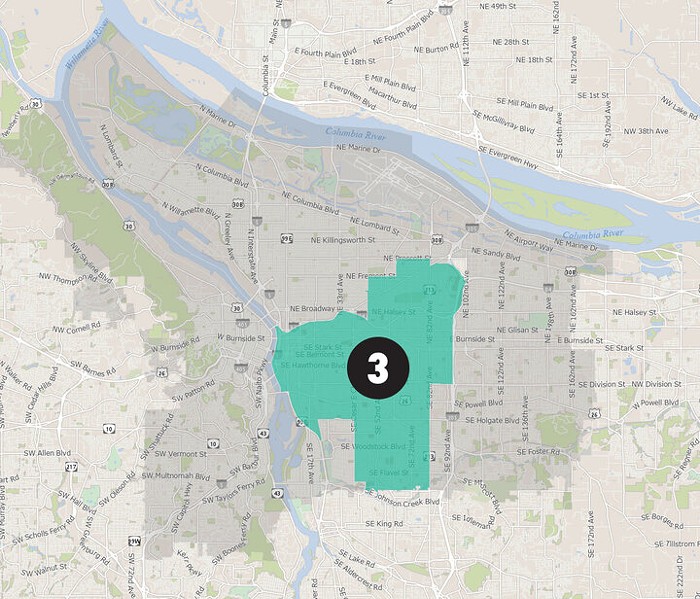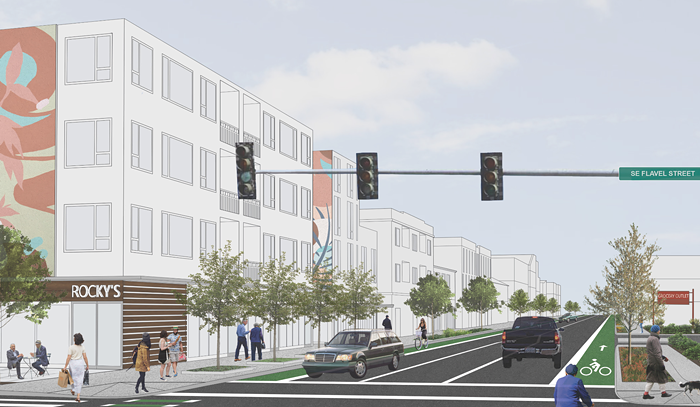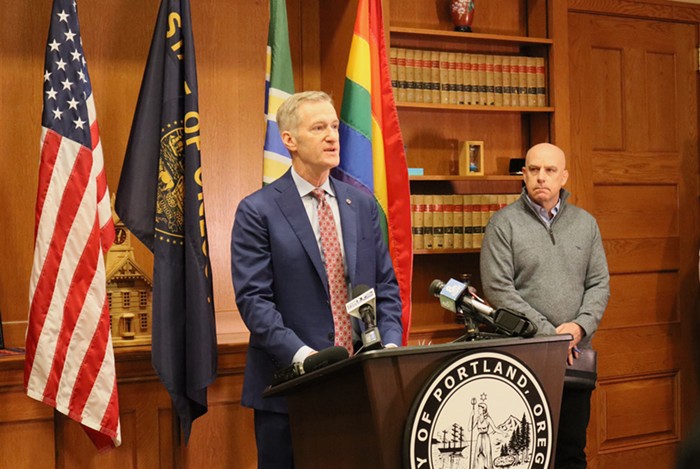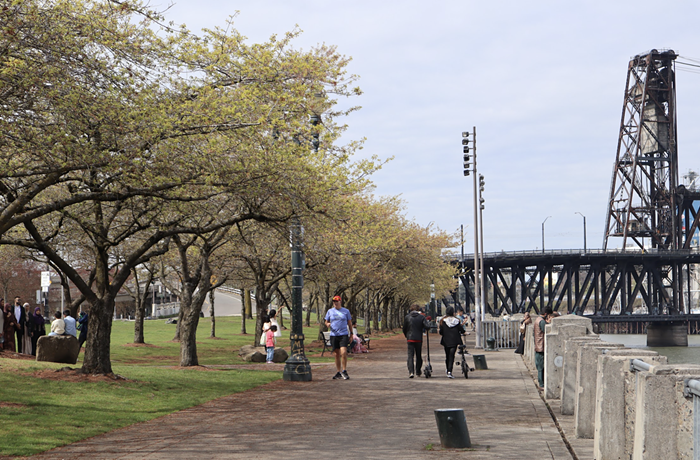Honestly, it's a miracle this clattering, smoking contraption of a city even keeps rolling (the chard-drunk Washington Post, notwithstanding).
For proof, waggle a few million bucks in fresh maintenance cash. Among the bleak specters that will emerge: bridges threatening to crumble onto the interstate; precarious, shoddily constructed retaining walls; fueling stations for city vehicles in such disrepair the Oregon Department of Environmental Quality is issuing fines; leaking roofs; community centers lacking heat.
They're all detailed—with semi-frequent exclamation points—in city bureaus' requests [pdf] for a portion of nearly $9 million in unanticipated cash the city's trying to figure out how to spend. Between six city bureaus, city council has $46.6 million in requested fixes. But not even the whole $9 million is necessarily up for grabs. Under city budget policy, only 25 percent of that surplus money must be allocated to maintenance. (Surpluses, or their polar opposite, deficits, are dealt with during the city's twice-yearly "Budget Monitoring Process", often called "bump" for short.)
That means something south of $2.5 million this year is earmarked for these purposes. Council's certainly free to go above that (and might well, if Commissioner Steve Novick's request to use around half for street maintenance, a sop for his and Mayor Charlie Hales' fight to pass a street tax, goes through) but everything's up in the air right now.
Council has some help in determining what projects have most merit, courtesy of a scoring process that rates the consequences of leaving a problem unaddressed (potential loss of life or environmental destruction, for instance), along with the benefits of a fix (tourism! less pollution!) and the likelihood of a piece of infrastructure failing. That scoring system is vetted by employees of eight separate bureaus, to help prevent people from overstating their woe.
The ratings came out earlier this month, just in time for terror season. Now, we give you the top five projects Portland bureaus (not including the sewer and water bureaus, which use ratepayer money for fixes) say need our URGENT MONETARY ATTENTION:
1: A crumbling, environmentally hazardous gasoline container near the Columbia Slough
Cost: $2,132,904

City-owned vehicles guzzle about $7 million every year. It'd be more if they didn't rely on discount fuel available at nine fueling sites throughout the city. But more than half of the 27 fueling tanks spread out among those stations have outlived their use, says the Office of Management and Finance. Particularly problematic are tanks near the waste water treatment center at 5001 N Columbia.
The site "has already received a DEQ citation and fine for failure to comply with performance standards," says the OMF's description. "DEQ requires action by the City to report scheduled decommissioning, or immediate discontinuance in storing gasoline with ethanol at this location."
We've asked the DEQ for the pertinent records, and are assured they're on the way (though one woman at the agency said it was hard for her to keep track of this specific citation, given all the enforcement actions DEQ issues against the city).
2: The NE 12th bridge over I-84 is barely hanging on
Cost: $9,736,909

You know this bread-scented bridge just north of the Franz factory. It "was built in 1910, and currently stands at 104 years old!" the Portland Bureau of Transportation yells in its description.
Then PBOT details why you shouldn't be lulled into false comfort by the smell of gluten as you cross: "The bridge is classified by the Federal NBI as Functionally Obsolete. It is also Fracture Critical. That means that if any one member of the bridge's trusses or girders should fail, then the whole bridge structure could collapse. This is obviously a significant hazard over I-84 and railroad tracks below."
The span, PBOT notes, "is also a significant earthquake hazard." (This is a common refrain in the push for funds, since so little of our city is ready for the Big One.)
3. A disguised bridge on N Willamette that may slide down the hillside.
Cost: $532,751

PBOT's "bridge number 007" sits precariously over Swan Island, on the curving stretch of N Willamette overlooking Portland's industrial splendor. It might be difficult to find on your own. According to PBOT's description: "the bridge does not appear to be obvious at the site, as the bridge overhangs the Willamette Bluff hillside. However this hillside has been known to have landslide activity over the years, which poses a concern for the stability of the bridge and the stability for Willamette Blvd."
PBOT wants to replace the imperiled bridge with something stronger and more stable, it says.
4. The porous roof charged with keeping Portland's emergency dispatch system dry
Cost: $2,976,910 (with all but $500,000 requested from BMP)

Portland's Bureau of Emergency Communications is vital if you want convenient things like police and ambulance service when you dial 911 (or after you push the button on that fob around your neck if you've fallen and can't get up). But the bureau's communications center has sprung several leaks, and its roof and walls could use replacing.
As BOEC makes clear in its description, your life is in danger: "If water leaks damage technology infrastructure in the building, multiple fatalities could result, and emergency response could be affected. Any possible disruption in service is disruption to an essential service to customers. The city is legally obligated to provide the essential services conducted in the PCC and is liable for disruptions in service that may occur."
5. A shoddily made retaining wall on SW Broadway
Price: $300,000

Take Broadway as it snakes south from downtown and up into the hills, and you'll pass a retaining wall leaning precariously out from its intended position. That's a problem, since the wall supports both the roadway and a water main that serves nearby homes. The barricade, PBOT says, is the poorest specimen in its "wall inventory." What's more, the bureau doesn't seem to have any idea why it was constructed like it is.
"It was built using broken chunks of concrete sidewalk, which is absolutely not a recommended type of retaining wall," the bureau wrote. "The wall is in significant danger of failing, and is already significantly leaning forward away from plumb."


















